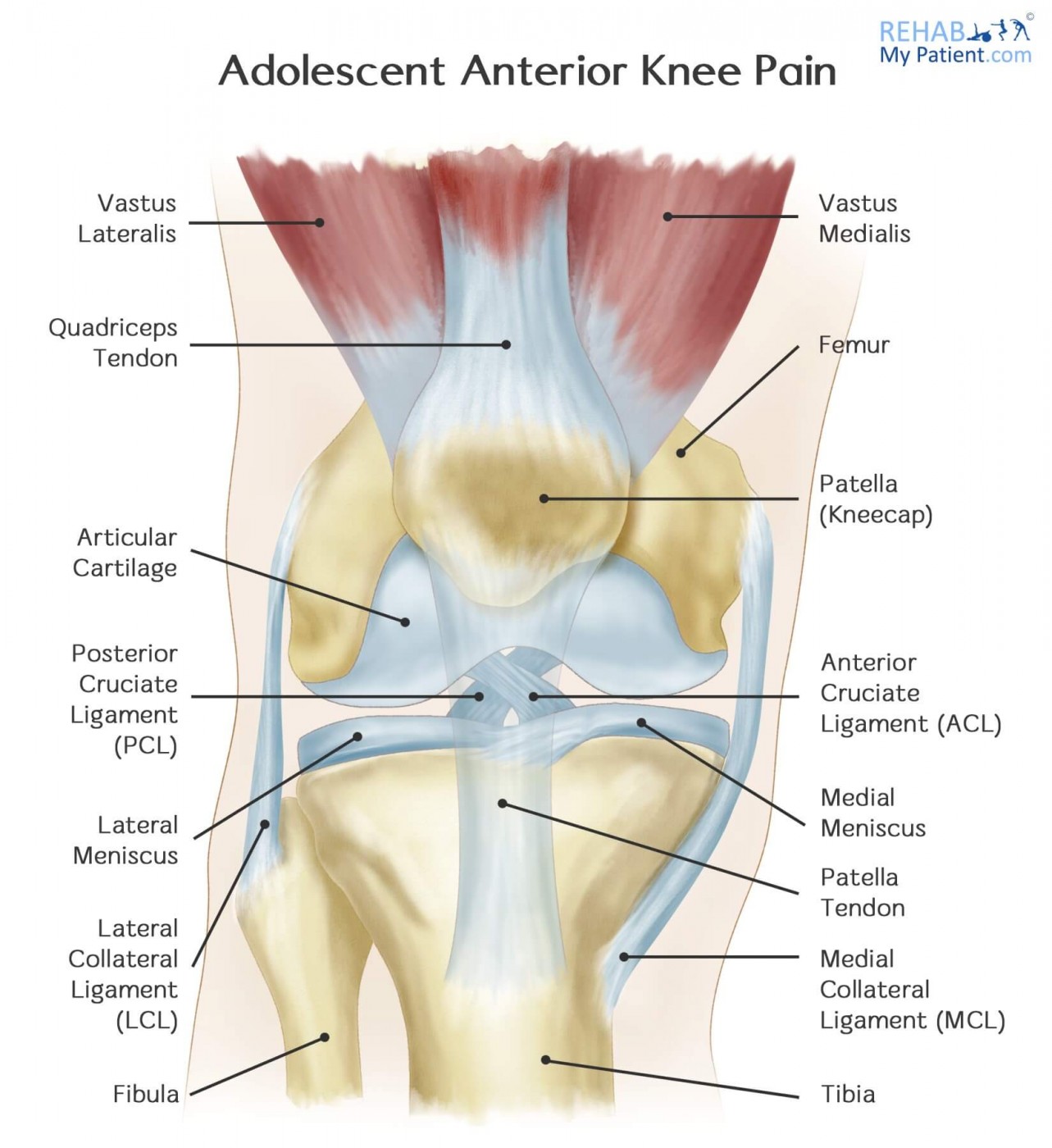Adolescent Anterior Knee Pain
Opublikowano dnia 15th Oct 2016 / Opublikowano w: Kolano

Adolescent anterior knee pain is a common presentation among healthy, active young individuals. Females are more commonly affected. Pain in the front (anterior) and the centre of the knee (behind the kneecap) usually gets better with manual therapy treatment and no surgical intervention is needed. Usually, pain is not associated with any particular abnormality in the knee.
Children around the age of 12-16 typically suffer with knee pain as a result of over-activity in sport, and can also be affected by growing.

Symptoms
· Gradual pain
· ‘Popping’ sounds in the knee when climbing stairs after prolonged sitting
· Aggravation of pain during activities that involve repeated knee bending
- Swelling
- Tenderness
Causes
The knee joint is sensitive to minor problems due to its complex anatomy that allows support of heavy loads. Some of the causes of anterior knee pain include:
· Thigh muscle imbalance
· Poor flexibility of the thigh muscles (especially the quadriceps muscles located along the front of the thigh)
· Flat feet
· Abnormalities in hip or/and knee alignment
· Kneecap instability
· Meniscal disorders
· Overdoing sports activities
· Use of inappropriate training techniques or equipment
How to Manage Pain:
· Ice to relieve swelling
· Rest (avoid activities that aggravate pain)
· Non-steroidal anti-inflammatory drugs (NSAIDs) to relieve pain
· Rehabilitation exercises to regain range of motion, strength and coordination. Your therapist can prescribe an exercise program to help you return to sports activities gradually and, safely
How Does Manual Therapy Help?
Physical therapy for anterior knee pain can be very useful for establishing an accurate diagnosis of the cause of the problem, hence allowing a solution to be found. Also, a therapist can identify any biomechanical issues with the feet, knees, hips or spine that might be influencing the problem. Once identified, these issues can be addressed and fixed to ensure that no further problems occur.
Treatment often consists of soft tissue massage to tight muscles, and strengthening exercises to weak muscles.
Tips to Prevent Reoccurrence:
· Wear appropriate shoes.
· Always do stretching exercises before physical activities.
· Stop any activity that aggravates your knee pain.
· Limit distance training and competition.
Zapisać się
Zarejestruj się już teraz, aby skorzystać z bezpłatnego okresu próbnego!
Zacznij korzystać z Rehab My Patient już dziś i zrewolucjonizuj proces przepisywania ćwiczeń, aby zapewnić sobie skuteczną rehabilitację.
Rozpocznij 14-dniowy bezpłatny okres próbny